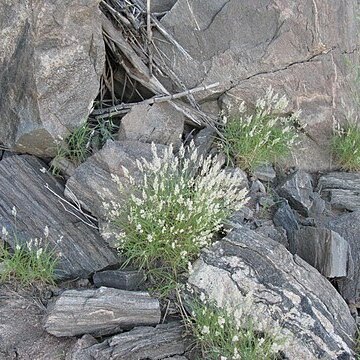Perennial, sometimes suffrutescent, or rarely annual. Culms tufted. Leaf blades mostly rolled, tough, sometimes deciduous from the sheaths. Inflorescence a narrow or open panicle. Spikelets with 1 floret; glumes scarious, unequal or subequal, 1–11-veined; floret callus laterally bearded, pungent; lemma narrowly cylindrical, indurated, glabrous or sparsely hairy; awn 3-branched, articulated at the lemma apex, a twisted column present or not, at least the central awn branch plumose, lateral branches shorter, often capillary. Stamens 3.
Lemma narrow, cylindric, with involute margins, 3-nerved, grooved ventrally, becoming indurated at maturity, bearing at the base a well developed pungent or minutely 2-fid, usually oblique, barbate or glabrous callus, awned from the apex of the lemma or from the apex of a usually twisted column; awns usually 3, all plumose, or at least the central one plumose, or with a penicil of hairs at the apex of the column; articulation present, being situated at or above the middle or between the base of the column and the body of the lemma.
Annual or densely caespitose perennial grasses with a well developed knotty rhizomatous base, with usually erect, simple or branched, hollow or solid culms, and with usually long narrow leaves; ligule of a dense rim of cilia; panicles narrow, spiciform or effuse and open.
Caryopsis terete, frequently shallowly grooved ventrally, tightly enclosed by the lemma, free; hilum linear; embryo usually 1/3-1/2 the length of the caryopsis.
Glumes persistent, equal or unequal, narrow, acuminate to obtuse, occasionally emarginate, 1-11-nerved, usually both 3-nerved.
Palea usually much less than 1/2 the length of the lemma, indurated, 2-nerved, glabrous.
Spikelets 1-flowered, pedicelled, in terminal contracted or lax panicles.
Florets hermaphrodite, equalling or shorter than the glumes.
Ovary glabrous; styles free; stigmas 2, plumose.
Rhachilla disarticulating above the glumes.
Lodicules usually 2, or absent, obtuse.
Stamens 3.

